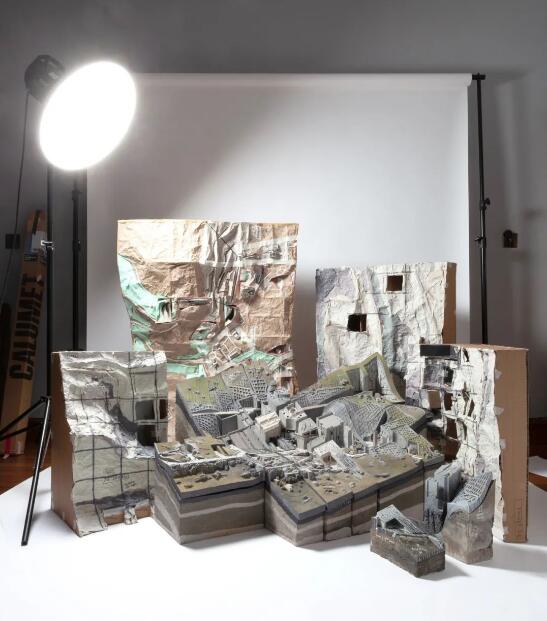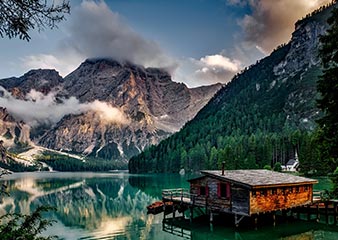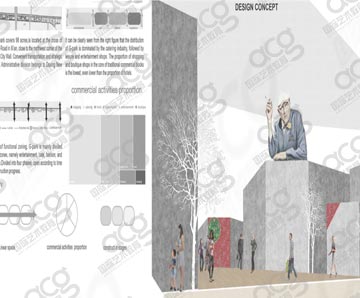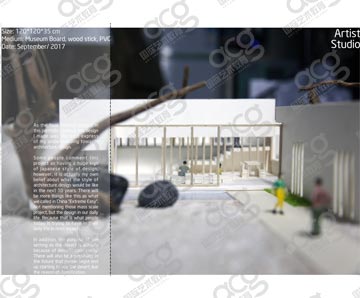UCL石材建筑景观作品集,石材建筑的复兴——创造一种新的生产景观形式,一个新系列!后续会继续为大家分享UCL建筑设计的毕业作品,本期为2021年Uncommon Ground主题作品Pete Davies同学的作品,一起来看看吧~
UCL石材建筑景观作品集,石材建筑的复兴——创造一种新的生产景观形式,一个新系列!后续会继续为大家分享UCL建筑设计的毕业作品,本期为2021年Uncommon Ground主题作品Pete Davies同学的作品,一起来看看吧~
Uncommon Ground
This year’s brief challenged students to rethink the edges and intersections between landscape and the urban realm,hand-in-hand with those between public and private space.These relationships are fluid,volatile,contested and reciprocal,and challenge the polarised notions that the unit continues to revisit:preservation versus progress and wilderness versus culture.
Situation Abnormal
Our rural environment is substantially cultured as‘wilderness kept in check’or for the production of vast quantities of food–70%of the UK’s land is agricultural.Environmental technologies and nature have become inextricably linked;cutting-edge technologies are increasingly deployed that engineer nature from the micro-scale of genetically modified crops to the global scale of GPS agricultural automation.Furthermore,the landscape is crisscrossed with infrastructural networks,inter-urban links of road and rail that also connect cities with their surrounding rural areas and the regions of supply with the centres of demand.We ask,‘What are the radical outcomes of the synthesis of urban and rural spaces?’
A further blurring of the distinction between rural and urban,and private and public is the privatisation of nature.‘Natural capital’,stocks of natural assets,access to and control of material resources,even natural ones like forests and fields–soil,geology,water,air and all living things–are controlled by property rights where commercial agendas can overturn seemingly common sense.In our cities too,‘public’spaces are being transferred to private ownership–Privately Owned Public Space(POPS)–with byelaws,urban design,surveillance and policing to control perceived misuse.We ask,‘How can architectural and technical innovations alleviate the pressure of private encroachment on public environments?’
Re-Commoning
We can see that the future of the city is inextricably linked to that of the rural.Controversially,some advocate for re-commoning:the application of a‘sharing economy’to urban space,borrowed from archaic rural environments that persist today.Contemporary commons are not only a material resource;they are also a form of social organisation that could be revisited in our urban environment.During lockdown,the use of urban parks soared where the Commons Law–the right of certain individuals to enjoy the property of others–was exploited and the Victorian parkland concept of‘rational recreation’–the ordered and orderly use of landscape–was stretched to breaking point.We ask,‘How can principles of commoning be applied to urban space?’
今年的项目要求学生重新思考景观和城市领域之间的边界和交叉点,以及公共和私人空间之间的边界和交叉点。这些关系是流动的、不稳定的、有争议的和互惠的,并挑战了这个单元继续重新审视的两极观念:保护与进步、荒野与文化。
非正常情况
我们的农村环境基本上被培养成“受控制的荒野”或大量食物的生产——英国70%的土地是农业用地。环境技术和自然已经密不可分;从转基因作物的微观尺度到全球范围的GPS农业自动化,尖端技术越来越多地应用于工程大自然。此外,基础设施网络、城市间的公路和铁路连接也将城市与其周围的农村地区以及供应区域与需求中心连接在一起。我们的问题是,“城市和乡村空间综合的根本结果是什么?”
农村和城市、私人和公共之间的界限进一步模糊,这就是对自然的私有化。“自然资本”、自然资产的存量、物质资源的获取和控制,甚至是像森林和田地这样的自然资源——土壤、地质、水、空气和所有生物——都是由产权控制的,而商业议程可以推翻表面上的常识。在我们的城市中,“公共”空间也正在被转移到私人所有——私人拥有的公共空间(POPS)——通过法规、城市设计、监控和警察来控制被认为的滥用。我们的问题是,‘建筑和技术创新如何减轻私人对公共环境的侵蚀?”
重新共享
我们可以看到,城市的未来与农村的未来是密不可分的。有争议的是,一些人提倡重新共享:将“共享经济”应用于城市空间,借鉴了延续至今的古老乡村环境。当代公地不仅是一种物质资源;它们也是一种社会组织形式,可以在我们的城市环境中重新审视。在封锁期间,城市公园的使用率飙升,因为公共法——某些个人享有其他人财产的权利——被利用,维多利亚时代的公园用地概念——“理性休闲”——有序地使用景观——被延伸到极限。我们问,‘如何将共通原则应用于城市空间?”
Pete Davies
Year 5 Portfolio Prize
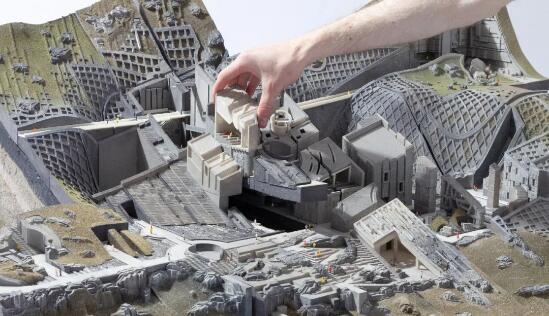
由于新的结构石材技术及其低水平的隐含碳,英国石材语言中心原住民石材重新获得了作为结构建筑材料的兴趣。
因此,石头语言中心解决了英国废弃采石场的未来问题,旨在重新激活北威尔士Nant Gwrtheyrn休眠的花岗岩采石场。随着花岗岩需求的下降,南特的采石场在1930年代被废弃。威尔士语言中心在1980年代收回了南特,山谷经历了从出口自然资源到出口知识和文化的转变。石语中心旨在利用该地区丰富的文化和工业特色,作为创新、教育和建设的实验室。该项目提倡结构性石材建筑的复兴,并展示石材从开采到材料回收和再利用的全生命周期效益。
该项目创造了一种新的生产景观形式,重新利用场地的自然资源和副产品,形成新的混合景观,稳定并恢复了南特山谷的原始轮廓。整体石头建筑为石头语言中心提供空间,在丰富的威尔士景观中创造了一个学习和发现的空间。
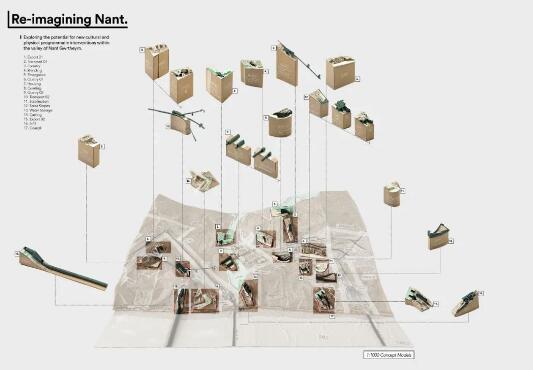
△重新想象南特
探索在Nant Gwrtheyrn山谷内进行新的文化和物理规划干预的潜力

△未来?
本研究探讨了如何将遗址的物理和历史属性表达为创造新文化景观的手段,在林恩半岛发展生态博物馆的想法。
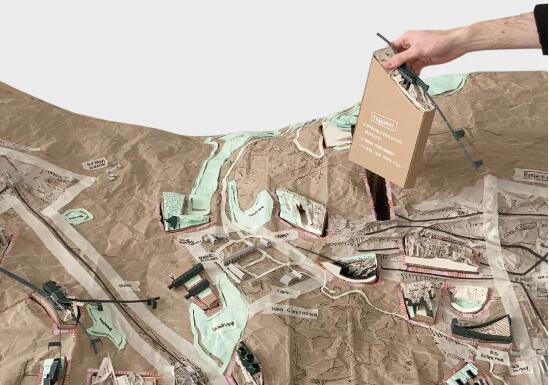
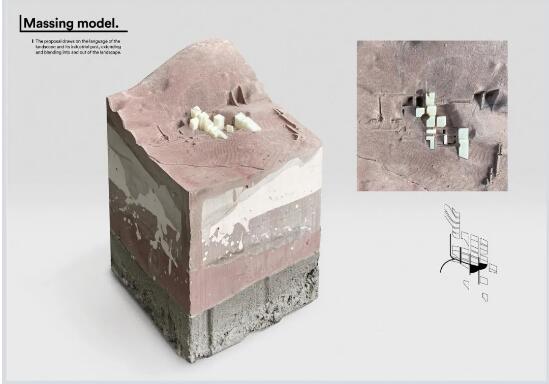
△体量模型
该提案借鉴了景观的语言及其工业历史,在景观中延伸和融合。
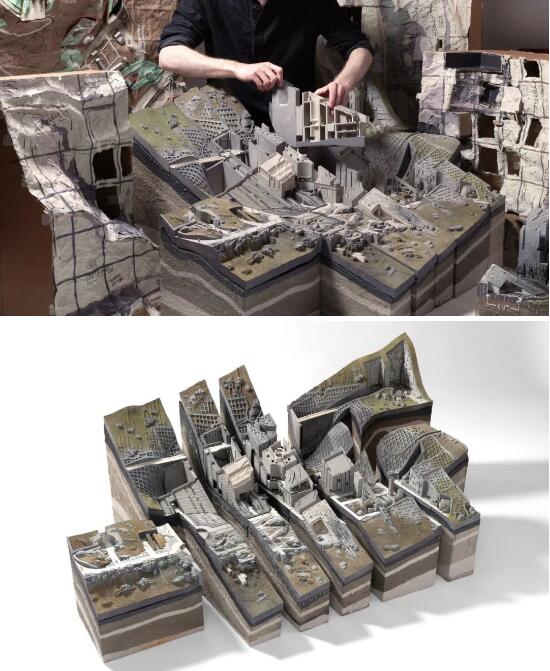
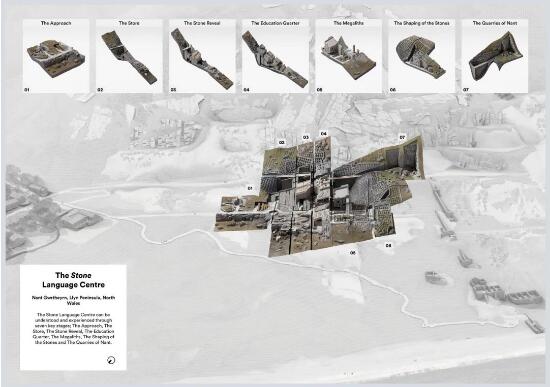
△石头语言中心
石语中心可以通过七个关键阶段来理解和体验:通道、商店、石头显露、教育区、巨石阵、石头的塑造和南特的采石场。

△循环
两条主要的轴向路线横跨场地,将游客从南特连接到采石场。楼梯、坡道和电梯网络连接上、中、下露台层,让游客可以探索场地的不同特色区域。
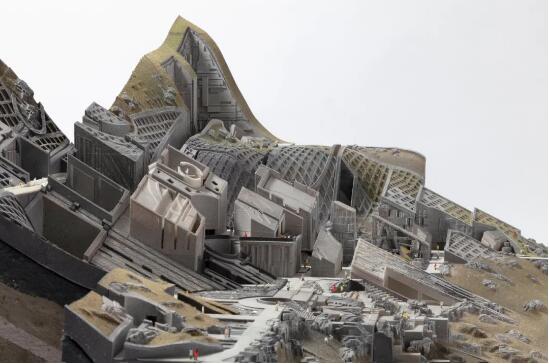

△石头显露
揭开剖面后,可以理解礼堂屋顶的起伏形式,后张的石板形成流体形式,轻柔地投射在石头表面。
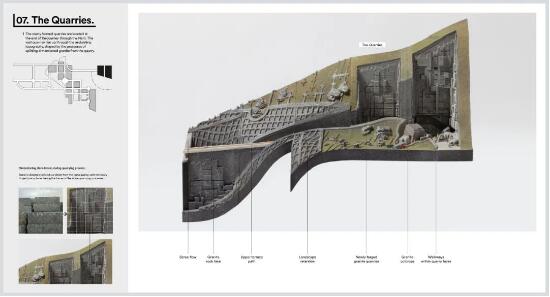
△采石场
新形成的采石场位于穿越南特的旅程的尽头,巨大的采石场从起伏的地形中升起,由从采石场分裂尺寸的花岗岩的过程形成。
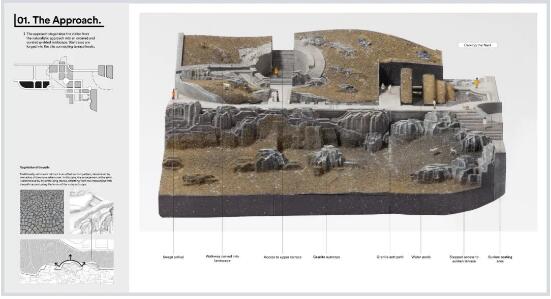
△通道
进场阶段将参观者从自然主义的方法带入有序和精心策划的网格景观,楼梯被锻造到连接露台层的场地中。

△采石场
采石场通道似乎穿过景观,打破了网格,将游客引导到采石场的中心。人行道刻在采石场的墙壁上,使游客能够探索和体验采石场。
